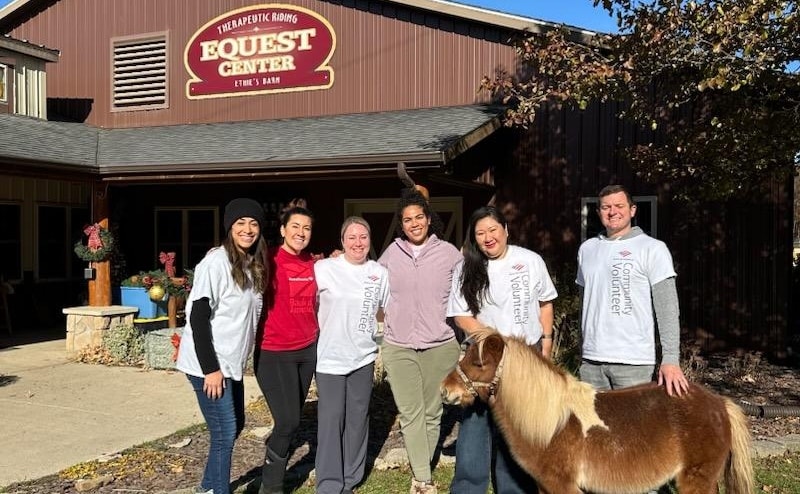Catch up with GR housing: A booming market, affordable housing, the “missing middle” and more
Over the past year, writer Marjorie Steele has tackled a few of the pressing issues in housing in Grand Rapids. Check out what you've missed.

The state of Grand Rapids housing costs: A 10-year review
“The rent is too damn high” is a common sentiment here in Grand Rapids, a city which, thanks to a strong creative and progressive culture, has been keenly sensitive to the impending fate of its beloved and historically very affordable residential neighborhoods.
At the core of this sentiment is gentrification. It’s coming—or it’s here, depending on who you talk to—and whether spiking housing costs are truly happening or not, our community’s fear of them is tangible.
Placing speculations aside, how exactly has Grand Rapids’ housing market fared over the last ten years, and what’s changed?
As most of us will recall, ten years ago the nation was on the brink of a financial recession that was about to gut the real estate market, with Grand Rapids being no exception. This makes it an interesting time period to examine, but it also provides a cautionary tale about predicting trends, so this research does its best to examine not only general trends, but the nuances expressed in the data—and the neighborhoods and people they represent.
Cracking the affordable housing conundrum with creative solutions
Affordable housing has been on the minds of many Grand Rapidians lately, from the hundreds waiting for housing assistance from Salvation Army’s Housing Assistance Program, to the City Council’s work on the Housing Advisory Committee’s Housing NOW! recommendations. While the housing market’s rebound from the recession has been a boon for many property owners and businesses, stagnant wages among the lower classes have brought the issue of affordability to a head.
As we outlined in January, although Grand Rapids residents’ earning power has increased in proportion to housing values over the last ten years, these income increases have been enjoyed almost exclusively by the upper and upper middle class. This, combined with historically low inventories on a national scale, has led to housing insecurity among our community’s most vulnerable populations, and to widespread concern over gentrification.

“We know gentrification is real and it’s happening everywhere. So what does it look like for us? What are we going to do about it? How can we get involved? It’s really about the people’s role,” Heartside resident and business owner Synia Jordan told WZZM 13 in February.
Media headlines locally, and across the country, have been ominously proclaiming a “housing crisis,” but this is only a portion of the full picture.
Are you the “missing middle?” Local developers get creative in housing’s most neglected sector
Recent dips in housing supply, exacerbated by the combination of flatlined middle and lower class wages and rising costs, have brought to light a longstanding problem in the real estate development industry: the dreaded “missing middle.”
As we explored in April in our discussion about affordable housing, the “missing middle” refers to housing accessible to middle income earners — this is often defined as 80-100 percent of area median income (AMI), which is about $50-65K/year for Grand Rapids, according to HUD. These are the individuals and families who make too much money to quality for the majority of low-income housing (much of which is capped at 50 percent of AMI, or about $35K/year in Grand Rapids), but don’t make enough money to afford standard “market rate” housing, which targets incomes at 100 percent of AMI and up (or $65K/year+).
Unfortunately for these middle income earners, when housing demand is scarce, this bracket of affordability is the first to dry up — and the most difficult to replace. Much of the housing that is affordable to the middle market in Grand Rapids’ urban areas right now are one- to two- bedroom rentals, leaving most middle market families out in the cold.
So why does middle market housing go missing? The short answer: there’s no money in it.
The longer answer involves the fact that property developers — particularly large scale, multi-unit developers — rely on a complex combination of equity and capital investment. The simplest deals develop market rate apartments which can be rented at “market rate,” or 100 percent of AMI or higher — as high as the market can bear. Alternatively, developers can offset their costs through a number of local, state, and HUD incentives. These incentives exist to close specific gaps: historic preservation, economic development, and most notably: low income housing affordability. Yet affordable housing incentives come with complex requirements, and they typically target lower income brackets making $35K/year or less.
In other words: there’s no way to make a profit in middle market housing, and therefore no way to develop it.
At least, that’s been the common mentality in the industry. But developers of all sizes across Grand Rapids are using creative solutions to close the gap — solutions which could become models for success.









